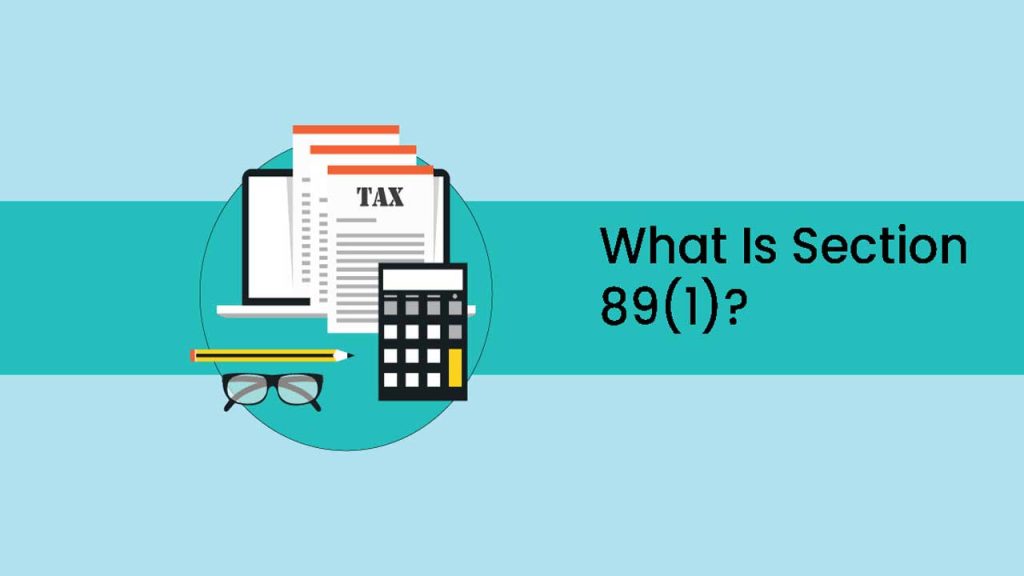Section 89(1) – Taxes are determined from the total income gained or obtained for the year. If your net compensation contains any past fees charged in the financial year, you might be nervous about charging a higher tax on those arrears (normally tax rates have gone up over the years).
In order to shield you from any undue tax liability due to delays in receipt of wages, the tax code allows for relief u/s 89. (1).
Simply put, you don’t pay any taxes if you’ve been late in paying, and you’ve been in a lower tax bracket for the year you got the money.
An employee must comply with such requirements in order to apply for relief under such a provision. For the first time, the relief alluded to in Section 89 may be sought on any of the following obtained within a given year.

- Salary received in arrears or in advance.
- Premature withdrawal from Provident Fund
- Gratuity
- Commuted value of pension
- Arrears of family pension
- Compensation on termination of employment
How to claim relief under section 89(1)
An employee eligible to seek relief under Section 89 should submit Form 10E. It should be uploaded to the income tax department’s e-filing portal or website. According to Section 89(1), tax relief shall be given by recalculation of the tax for the year in which the arrears are earned and the year in which the arrears are paid; and the tax shall be calculated for the year in which the arrears are due.
Must Read – How to submit Form 10E?
How to calculate relief under Section 89(1)?
- Determine tax owed on the total income, plus extra salaries, arrears or compensations, in the year it is paid.
- Assess the tax payable on the total income for the year in which it is paid, minus any extra salary.
- Deduct the estimate of Step 2 from the gross wage calculation of Step 1
- Determine the rate of tax owed on the net revenue, minus arrears, during the year to which the arrears apply.
- Measure the rate of tax owed on the gross revenue, before arrears, for the year to which the arrears apply.
- Measure the difference in Step 4 and Step 5.
- The surplus balance in Step 3 over Step 6 is a tax exemption which will be provided to you, whereas in the event that the sum in Step 6 is higher than the amount in Step 3, no exemption will be provided.
Likewise, you should execute the above instructions on the income tax portal.
Points to remember whenever you seeking relief on arrears:
- Form 10E should be uploaded electronically. All taxpayers who received relief over the last FY but did not issue Form 10E would obtain a notification from the Income Tax Department for non-compliance, nevertheless, the return will not be assessed unless you send the form.
- Salary is typically payable when it is due or when it is paid, however, in the event of arrears, it is typically recorded back, that’s why it cannot be taxed when it is due.
- Please submit Form 10E prior to filing your ITR. When picking an evaluation year for arrears, you should pick the assessment year in which arrears were issued. For eg, if arrears have been earned in FY 2018-19, the assessment year is AY 2019-20.
- You do not need to apply a duplicate of Form 10E to your tax return. You should, however, register and retain all information in your history.
- Your employer may request proof of the submission of Form 10E, but it is not mandatory to submit this form to the employer.



